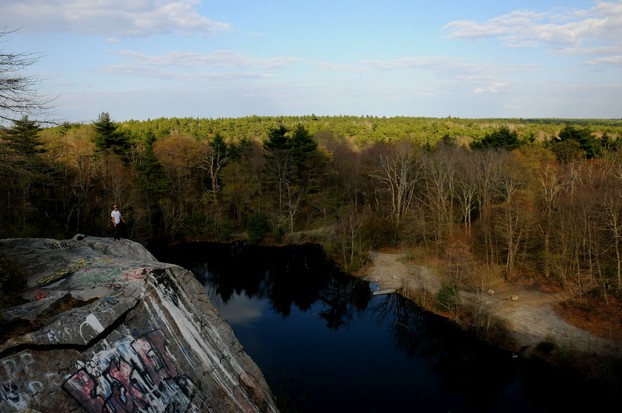When originally looking at this assignment weeks before I had very high hopes for what I would do. I work in a public high school that serves over 2000 students in my city and was excited to do something that would help my community as well. My ideas included making menstruation products more accessible since they’re only available in the nurses office rather then the bathrooms, or working with the health and/or environmental classes and doing some sort of presentation with them. Unfortunately I did not plan in advance the way a project like that would’ve required and ultimately decided to just go the trying to be vegan route for a week. I’m still interested in making the menstruation products more accessible to students and am hoping to still work with the administrators on making that happen. I also mid semester took on Health and Society as a double major so I’m definitely interested in working with the health classes on some level to, hopefully in a way that incorporates ecology/environmental sustainability.
Adopting a vegan diet is something I’ve always been interested in but just never quite had to motivation to do. I had hoped to do it in a more gradual way, but clearly I’ve been saying it for years and haven’t so this is a new reason to do it. Unlike some people, I can afford to do it both financially and health wise without any extraordinary strain, so I think it is something that myself, and people like me should be striving for. My mom doesn’t eat bread or things like that so we already have plenty of veggies and substitutes for bread (everything is cauliflower) in the house. I already don’t drink milk and while I do love enjoy eating meat I’m pretty confident I can be fine without it. I know the most difficult thing for me will be giving up cheese because I pretty much put that on everything. Luckily, I have a few friends who also recently went vegan and they gave me their recipes and even what cheeses they thought tasted the best (CHAO). So my plan is to head down to the grocery store (with a budget) pick up some other things I might need and then get to it! I lot of my quick go to meals are definitely not vegan and I think would require a lot of prep to make them so, so what I’m most worried about is not having the time to fully commit to it, or that I’ll cave for some cheese! I am hopeful that at the end of the week I will want to continue the experiment longer, or perhaps at least incorporate more of these items into my regular diet to substitute non-vegan items.
Update 4/18: Results & Analysis
I was ultimately successful in eliminating meat products from my diet for the week with only one slip up (GOT is treated like the Super Bowl at my house and I could not resist). While I encountered a lot of temptations I was able to resist for the most part and was surprised at the amount of tasty substitutes available, though they do cost a considerable amount of money, at least on my wallet. It definitely does take a fair amount of trial and error in finding substitutes that are tasty to you, and in preparing the food in advance, or at least knowing what you’re going to eat, so you don’t end up eating the same things every day every time you get hungry.
With my mom doing on Keto, which involves A LOT of meat, dairy, and eggs, it was interesting to see how the different diets played out at the same time. With two other people in my house with no dietary restrictions or interest in trying either diet, this meant the same style meal done in three different ways. While I did cheat with some buffalo chicken dip during the GOT premiere, when I went to my friends’s house later in the week, who has been vegan for a while, she had made a vegan buffalo *chicken* dip that was actually really good and tasted decently similar, along with other vegan snacks like pizza. This showed me that it was possible to make tasty dishes if I put the time aside to test around with different ingredients and the money.
A lot of unhealthy things that we wouldn’t normally think of as being vegan, like a lot of very popular processed junk foods, but I tried to avoid that and focus more on eating healthier too, since I was looking forward to the benefits of a cleaner diet as well. I usually live off of tums and gas-x because my tummy is very sensitive and perhaps it was a sort of placebo effect but I definitely felt way less bloated and reliant on those things throughout the week.
As I’d mentioned in a post earlier in the semester, its virtually impossible for any diet to be entirely cruelty free in our current economic system where the food industry is dependent on the exploitation of resources and labor.
While it felt good to know that I personally got to play a role in not consuming things that animals had to die for, I feel a little jaded towards the idea that any independent changes like this produce any real change – so I think it comes down to a willingness, if you have the ability to make this decision, to support a cruel industry or to not support it. For the mean time I will be returning to my usual diet but will definitely be more conscious of what I’m consuming, as well as working towards slowly integrating it so that its a lifestyle rather than a *diet* or at least so that my animal product intake is significantly lower.










